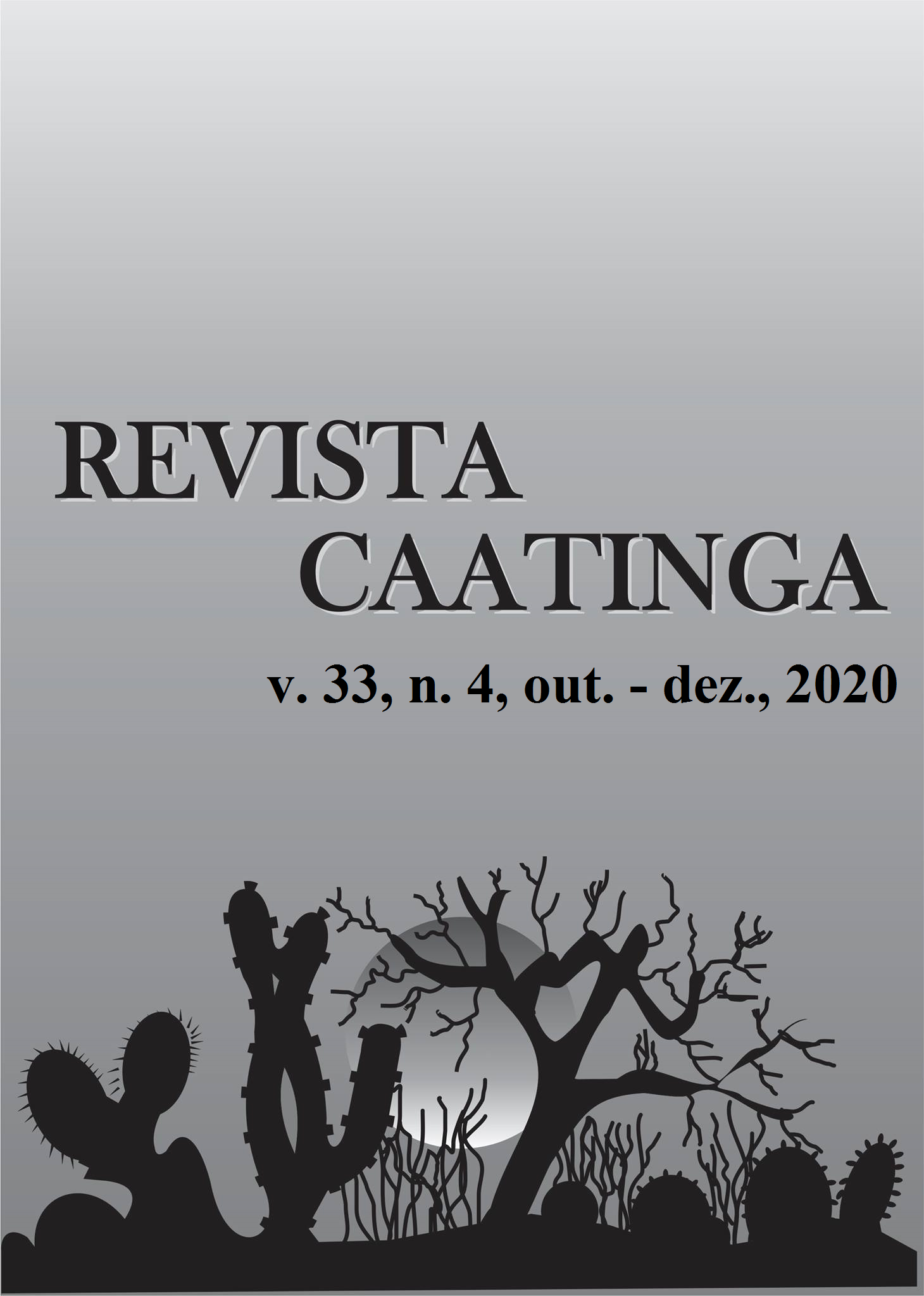VALUATION OF THE NUTRITIONAL MATRIX BY PHYTASE AND SOY GUM IN THE DIET FORMULATION FOR BROILER CHICKENS
DOI:
https://doi.org/10.1590/1983-21252020v33n425rcKeywords:
Additive. Available phosphorus. Emulsifie. Lecithin. Metabolisable energy.Abstract
The study was carried out with the objective of evaluating whether the valorisation of the nutritional matrix by the addition of the enzyme phytase and soy gum, in isolation or in association in the formulation of broiler chicken diets compromises the performance in the phase of 7 to 42 days of age and can be economically viable. Seven hundred 7-day-old male Cobb 500 broiler chicks were distributed in a completely randomised design consisting of seven treatments and five replications of 20 birds. The treatments consisted of a standard diet and six other diets whose matrix values of phytase and gum were valued, either alone or in combination, in the formulation of the diets. The individual valuation of the nutritional matrix of the phytase and soy gum in the formulation of feed for broiler chickens did not compromise the zootechnical performance of the chickens; however, only the valuation with phytase proved economically viable, since the inclusion of the gum and its valuation did not contribute to a reduction in the production cost or gross margin compared to a standard diet.
Downloads
References
AKECHI, B. V. Goma de soja na alimentação de frangos de corte: digestibilidade e desempenho. 2015. 43 f. Dissertação (Mestrado em Zootecnia: Área de Concentração em Ciência e Tecnologia Animal) – Faculdade de Engenharia, Universidade Estadual Paulista, Ilha Solteira, 2015.
ARAÚJO, J. M. A. Química de alimentos, teoria e prática. 4 ed. Viçosa, MG: Editora UFV, 2008. 596 p.
BEESON, L. A. et al. Hydrolysis of phytate to its lower esters can influence the growth performance nutrient utilization of broilers with regular or super doses of phytase. Poultry Science, 96: 2243-2253, 2017.
BORSATTI, L. et al. Apparent metabolizable energy of by-products from the soybean oil industry for broilers: acidulated soap stock, glycerin, lecithin and their mixture. Poultry Science, 97:1 24-130, 2018.
COWIESON, A. J.; WILCOCK, P.; BEDFORD, M. R. Super-dosing effects of phytase in poultry and other monogastrics. World Poultry Science Journal, 67: 225-236, 2011.
EMPRESA BRASILEIRA DE PESQUISA AGROPECUÁRIA- EMBRAPA. Centro de inteligência de aves e suínos - CIAS. ICPFrango/Embrapa. Disponível em: https://www.embrapa.br/suinos-e-aves/cias/custos/icpfrango. Acesso em: 22 jul. 2020.
FERREIRA, D. F. Sisvar: a computer statistical analysis system. Ciência e Agrotecnologia, 35: 1039-1042, 2011.
GÁLIK, B. et al. Feed additives affects the non-ruminats performace: a review. Animal Physiology, Nutrition and Welfare, 1: 41-47, 2019.
JIMENEZ, H. L. et al. Evaluation of high dietary phytase supplementation on performance, bone mineralization, and apparent ileal digestible energy of growing broilers. Poultry Science, 98: 811–819, 2019.
MANOBHAVAN, M. et al. Effect of super dosing of phytase on growth performance, ileal digestibility and bone characteristics in broilers fed corn-soya-based diets. Journal Animal of Physiology and Animal Nutrition.100: 93–100, 2015.
MELLO, E. S. Variação dos níveis de energia na dieta com goma de soja para poedeiras comerciais, desempenho e digestibilidade. 2017. 45 f. Dissertação (Mestrado em Zootecnia: Área de Concentração em Ciência e Tecnologia Animal) – Faculdade de Engenharia, Universidade Estadual Paulista, Ilha Solteira, 2017.
ROSTAGNO, H. S. et al. Tabelas brasileiras para aves e suínos: composição de alimentos e exigências nutricionais. 3. ed. Viçosa, MG: Editora UFV, 2011. 252 p.
SAKOMURA, N. K. Modeling energy utilization in broiler breeders, laying hens and broilers. Revista Brasileira de Ciência Avícola, 6: 1-11, 2004.
SOUZA, R. P. P. et al. Use of soybean gum as an emulsifier in diets for commercial laying hens. Pesquisa Agropecuária Brasileira, 54: 683, 2019.
TEIXEIRA, E. N. M. et al. Suplementação da fitase em rações com diferentes níveis de fósforo disponível para frangos de corte. Revista Ciência Agronômica, 44: 390-397, 2013.
TREVISAN, R. B. Programas nutricionais e seu efeito sobre os índices produtivos e econômicos de frangos de corte. 2013. 82 f. Dissertação (Mestrado em Zootecnia: Área de Concentração em Qualidade e Produtividade Animal ) – Faculdade de Zootecnia e Engenharia de Alimentos, Universidades de São Paulo, Pirassununga, 2013.
VIÑADO, A. et al. Crude soybean lecithin as alternative energy source for broiler chicken diets. Poultry Science, 98: 5601–5612, 2019.
WU, D. et al. Comparison of 3 phytases on energy utilization of a nutritionally marginal wheat-soybean meal broiler diet. Poultry Science, 94: 2670–2676, 2015.
YU, B. et al. Exogenous phytase activity in the gastrointestinal tract of broiler chickens. Animal Feed Science and Technology, 117: 295-303, 2004.
ZHANG, B. et al. Effect of fat type and lysophosphatidylcholine addition to broiler diets on performance, apparent digestibility of fatty acids and apparent metabolisable energy content. Feed Science and Technology, 163: 177-184, 2011.
Downloads
Published
Issue
Section
License
Os Autores que publicam na Revista Caatinga concordam com os seguintes termos:
a) Os Autores mantêm os direitos autorais e concedem à revista o direito de primeira publicação, com o trabalho simultaneamente licenciado sob a Licença Creative Commons do tipo atribuição CC-BY, para todo o conteúdo do periódico, exceto onde estiver identificado, que permite o compartilhamento do trabalho com reconhecimento da autoria e publicação inicial nesta revista, sem fins comerciais.
b) Os Autores têm autorização para distribuição não-exclusiva da versão do trabalho publicada nesta revista (ex.: publicar em repositório institucional ou como capítulo de livro), com reconhecimento de autoria e publicação inicial nesta revista.
c) Os Autores têm permissão e são estimulados a publicar e distribuir seu trabalho online (ex.: em repositórios institucionais ou na sua página pessoal) a qualquer ponto antes ou durante o processo editorial, já que isso pode gerar alterações produtivas, bem como aumentar o impacto e a citação do trabalho publicado (Veja O Efeito do Acesso Livre).







